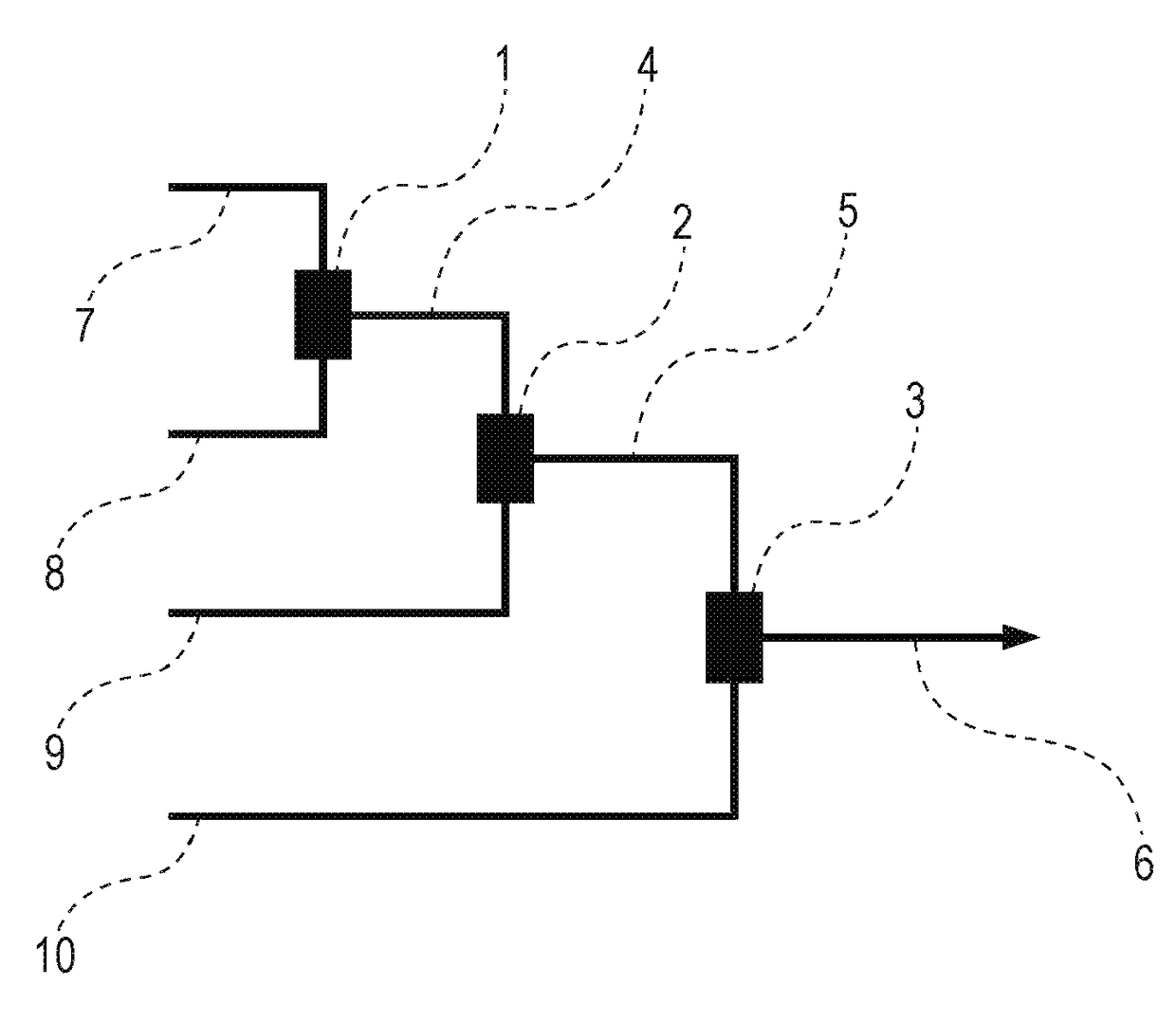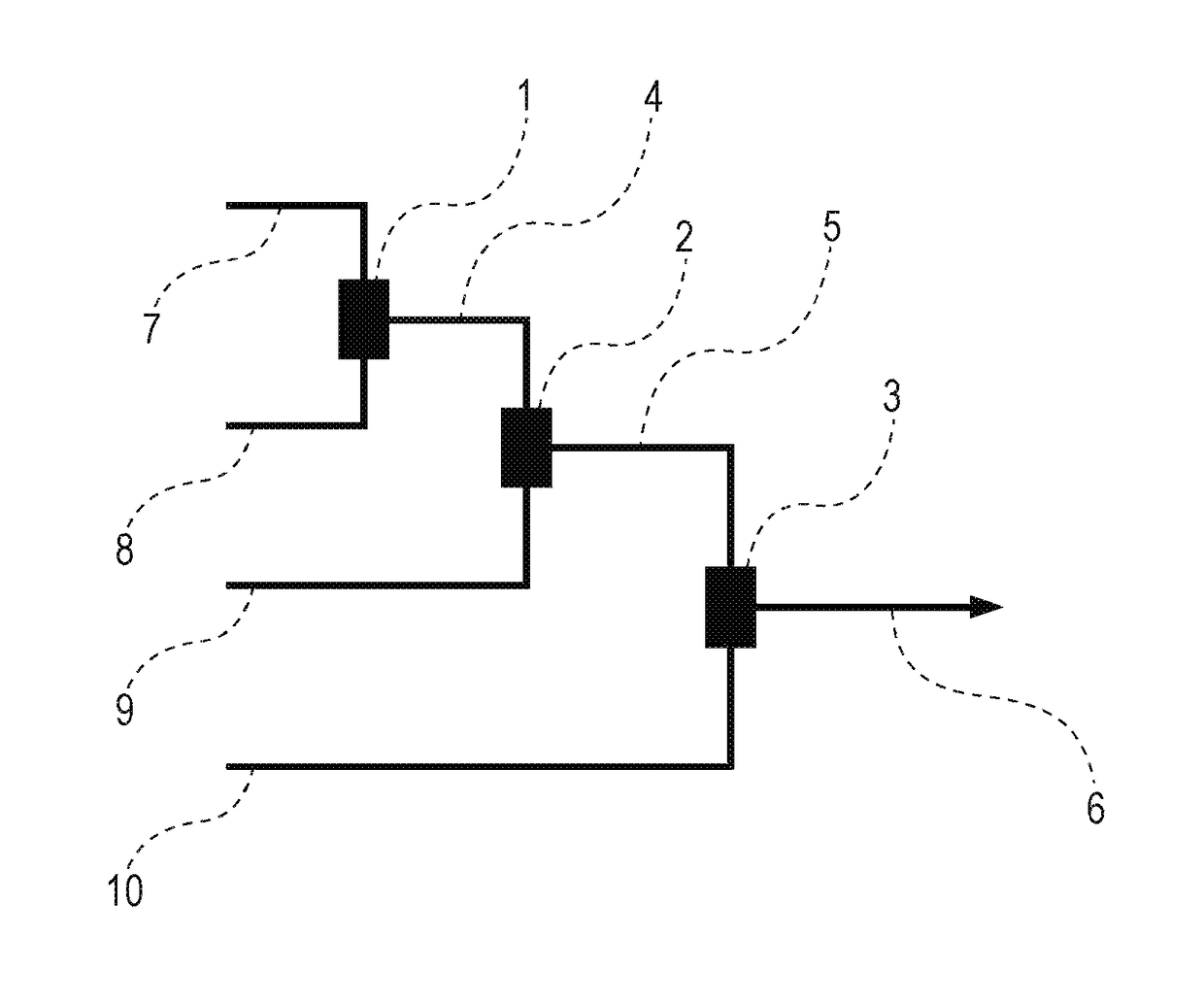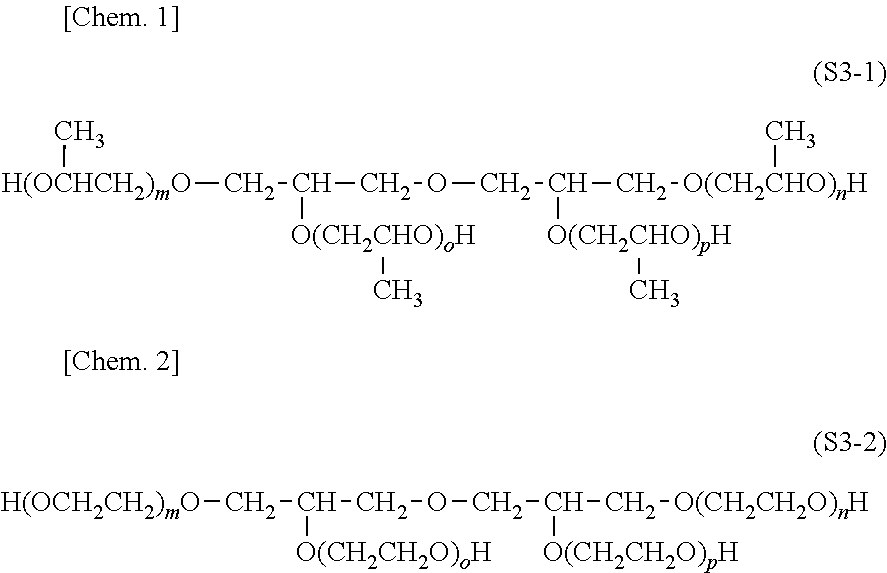Water-based ink for inkjet recording
a technology of water-based ink and inkjet printing, which is applied in the direction of ink, printing, duplication/marking methods, etc., can solve the problems of poor fixability, adversely affecting the ejectability of ink, and the above offset problem that occurs during high-speed printing has not yet been solved in all. , to achieve the effect of excellent ejectability, excellent rubfastness and providing an image surfa
- Summary
- Abstract
- Description
- Claims
- Application Information
AI Technical Summary
Benefits of technology
Problems solved by technology
Method used
Image
Examples
synthesis example 1
[0186]Butyllithium (BuLi) used as the polymerization initiator and styrene (St) used as the first monomer were introduced from the tube reactors P1 and P2 in FIGURE into the T-shaped micromixer M1 in FIGURE and subjected to living anionic polymerization to form a polymer.
[0187]Next, the polymer obtained was transferred to the T-shaped micromixer M2 in FIGURE through a tube reactor R1 in FIGURE, and the growing end of the polymer was trapped with a reaction control agent (α-methylstyrene (α-MeSt)) introduced from the tube reactor P3 in FIGURE.
[0188]Next, tert-butyl methacrylate (t-BMA) used as the second monomer was introduced into the T-shaped micromixer M3 from the tube reactor P4 in FIGURE. The second monomer and the polymer transferred through a tube reactor R2 in FIGURE were subjected to a continuous living anionic polymerization reaction. Then the reaction was quenched with methanol to thereby produce a block copolymer (PA-1).
[0189]In this process, the entire microreactor was i...
synthesis example 2
[0191]A reaction vessel equipped with a stirrer, a dropping unit, and a reflux unit was charged with 100 parts of methyl ethyl ketone, and the reaction vessel was purged with nitrogen under stirring. While the nitrogen atmosphere in the reaction vessel was maintained, the reaction vessel was heated to allow the methyl ethyl ketone to reflux, and then a solution mixture of 74 parts of styrene, 11 parts of acrylic acid, 15 parts of methacrylic acid, and 8 parts of a polymerization initiator (“V-75” manufactured by Wako Pure Chemical Industries, Ltd.) was added dropwise from the dropping unit over 2 hours. The temperature of the reaction system was held at 80° C. at some point during the dropwise addition.
[0192]After completion of the dropwise addition, the reaction was continued at 80° C. for 25 hours. During the reaction, the consumption of the raw materials was checked, and the polymerization initiator was added as needed. After completion of the reaction, methyl ethyl ketone was re...
production example 1
Aqueous Pigment Dispersion (C-1)
[0235]Step 1 was performed. Specifically, a 1.0 L intensive mixer (Nippon Eirich Co., Ltd.) was charged with 150 parts of a phthalocyanine-based pigment FASTOGEN Blue Pigment (C.I. Pigment 15:3, manufactured by DIC Corporation) used as the pigment, 45 parts of the polymer (P-1) used as the polymer (A), 150 parts of triethylene glycol used as a water-soluble solvent, and 20 parts of a 34% aqueous potassium hydroxide solution, and then the mixture was kneaded at a rotor peripheral speed of 2.94 m / s and a pan peripheral speed of 1 m / s for 25 minutes.
[0236]Next, step 2 was performed. Specifically, 450 parts of ion exchanged water was gradually added to the kneaded mixture in the container of the intensive mixer under continuous stirring, and then 185 parts of ion exchanged water was added and mixed. An aqueous pigment dispersion (C-1) with a pigment concentration of 15.0% was thereby obtained.
Production Examples 2, 3, and 5 to 9: Method for Producing Aque...
PUM
| Property | Measurement | Unit |
|---|---|---|
| vapor pressure | aaaaa | aaaaa |
| boiling point | aaaaa | aaaaa |
| boiling point | aaaaa | aaaaa |
Abstract
Description
Claims
Application Information
 Login to View More
Login to View More - R&D
- Intellectual Property
- Life Sciences
- Materials
- Tech Scout
- Unparalleled Data Quality
- Higher Quality Content
- 60% Fewer Hallucinations
Browse by: Latest US Patents, China's latest patents, Technical Efficacy Thesaurus, Application Domain, Technology Topic, Popular Technical Reports.
© 2025 PatSnap. All rights reserved.Legal|Privacy policy|Modern Slavery Act Transparency Statement|Sitemap|About US| Contact US: help@patsnap.com



